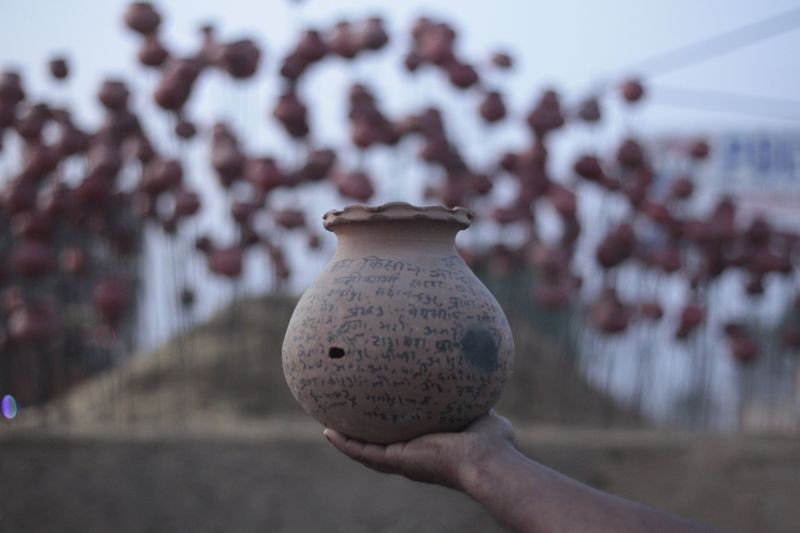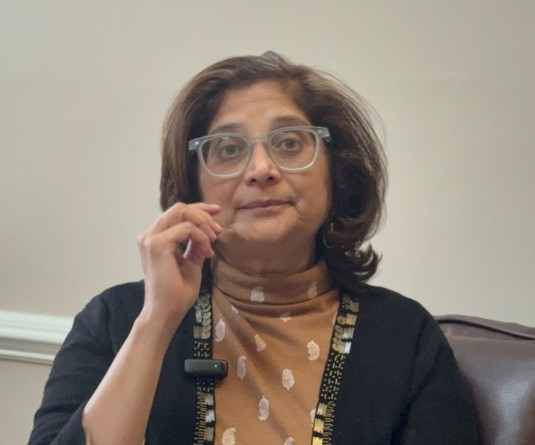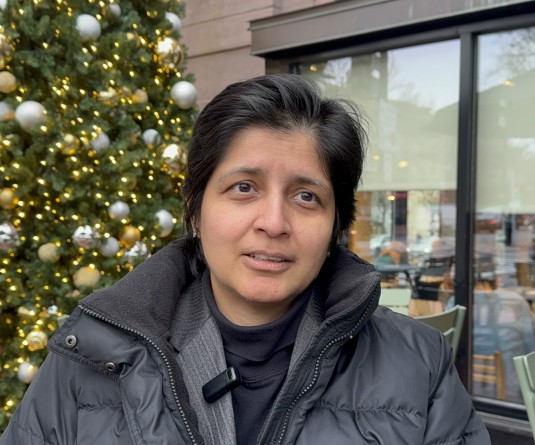Image Source: IANS News

New Delhi, April 27 (IANS) When politician Yogendra Yadav called him this month to discuss a memorial at Shahjahanpur on the Delhi-Rajasthan border to honour the farmers who had lost their lives during the agitation, it did not take long for Ahmedabad-based artist Lalon, who had been following the protests closely, to jump into worn out car with his friend Shubham Singh and undertake a 14-hour journey to Delhi.
Meanwhile, farmers from across the country were reaching the protest site with soil carried in a 'kalash' from their native places.
Although he had conceived something already but owing to paucity of time, it was decided that the pots the farmers were carrying from their native places could be used as part of the installation which has been going viral on the Internet.
Reaching late at night and sleeping in the cold, waking up to see the protesters braving everything with a smile, the NID-pass out recalls remembering Pablo Neruda's lines... eYou can cut all the flowers, but you cannot stop the spring from arriving.'
Using materials like terracotta and iron --- the former being earthen and latter, known to be sturdy, signifying the agriculturist's close relationship with earth and undying spirit, he says, "If you look at the structure, it might look fragile, but it is actually quite well-built. It resonates with the protesting farmers. They might appear poor, weak and helpless, but we have seen the strength of their resolve,"says the artist about the installation that was completed on April 14.
Considering it had to be wrapped up in less than three days, as many people were expected during the pre-scheduled date, the artist remembers that initially the farmers around could not fathom what he and his junior were doing. However, when they saw them working under the blazing sunlight, some offered them tea, others chaach. Many also started lending a hand. "Just when I was apprehensive about finishing the work on time, some ten farmers and labourers showed up. They helped us build the walls. And when we needed mud, one of them brought it on a tractor. And magically, the entire base was prepared in merely four hours."
Just next to the installation, there is police barricade. When they would stay up at night, some of the policemen would always offer them tea. Many confessed, "We are on duty because it is a part of our job. Many of us also hail from an agricultural background."
Lalon remembers that when one day, when he was working with his shoes on, an elderly farmer asked him to take off his shoes, stressing, "It is a memorial."
"As an artist, this was the biggest compliment."
While initially he thought of making the art work figurative or realistic so as to ensure that the common man would be able to comprehend the concept, he decided to follow his artistic vision, trusting the intelligence of the onlookers. "The farmers managed to understand it, in their own ways."
Although there was a debate if concrete should be used in the installation, the artist was completely against it. "When you create a sculpture depicting the farmers, it should not represent ego, but empathy. So, the material used is very simplistic. And instead of using concrete, we let grass grow at the bottom."
Originally from Bengal, Lalon, currently a Phd scholar at NID scholar feels that while artists must comment on contemporary social and political, the role of social media when it comes to art is sometimes exaggerated. "Traditional art forms like some sculptures and paintings cannot be effectively communicated through social media. If you make a sculpture, it needs a physical dimension. So yes, I do feel that social media is an effective tool for reaching to the target audience, but I still when it comes to subjects like the farmers' protests or the CAA-NRC protests, it becomes important to visit the site physically not just to get a firsthand experience, but also conceive things originally."
Even as more and more younger artists -- photographers, documentary filmmakers and performance artists are thronging protest sites, Lalon feels that the same not only helps in documentation, but also facilitates their connection with the masses at different levels. "When I visited the farmers' protest site, I gathered stories and gained experience that will probably help inspire me to do artwork for the rest of my life. It has helped me to depict the society from a unique perspective."
(Sukant Deepak can be contacted at sukant.d@ians.in)






